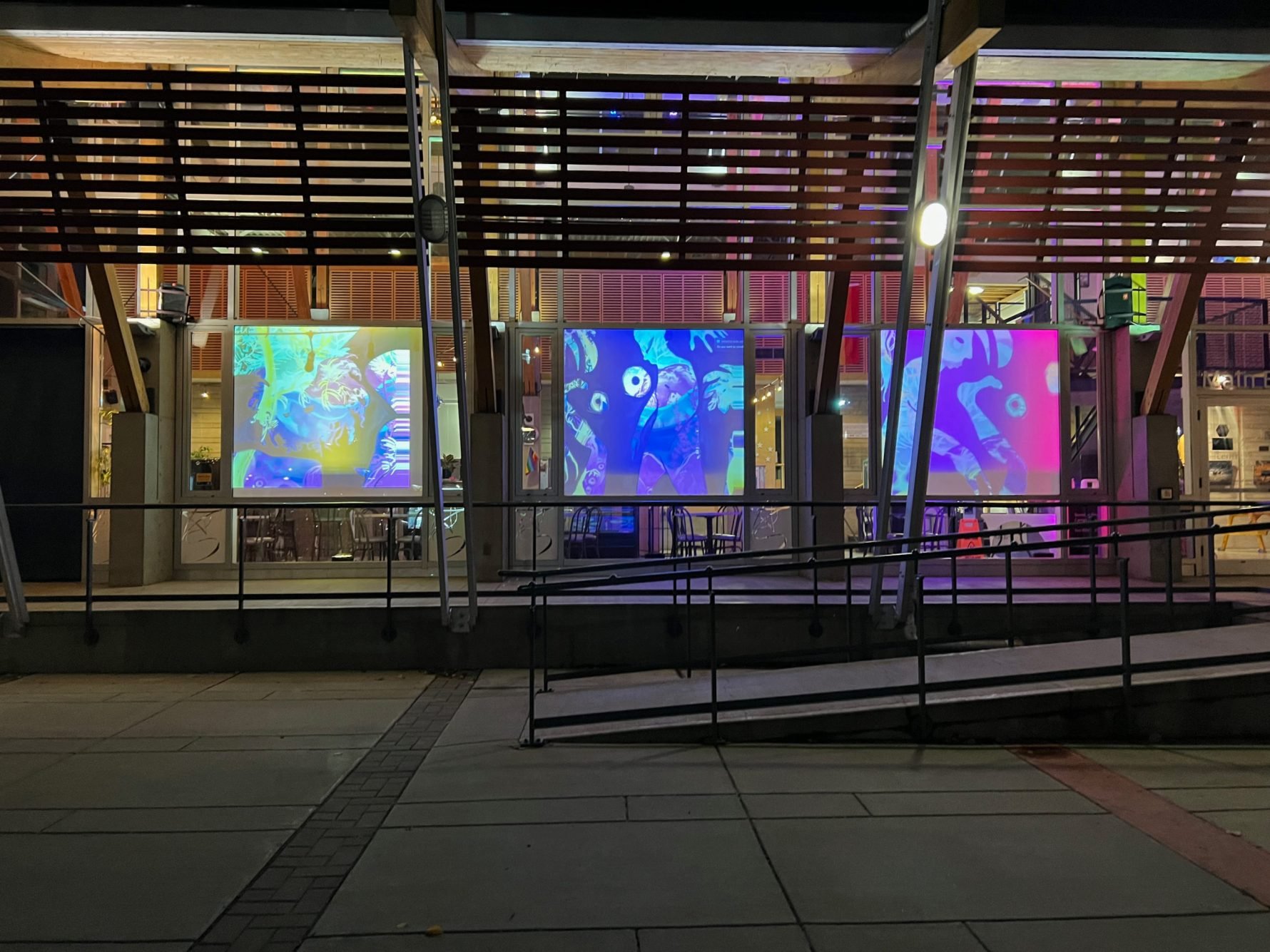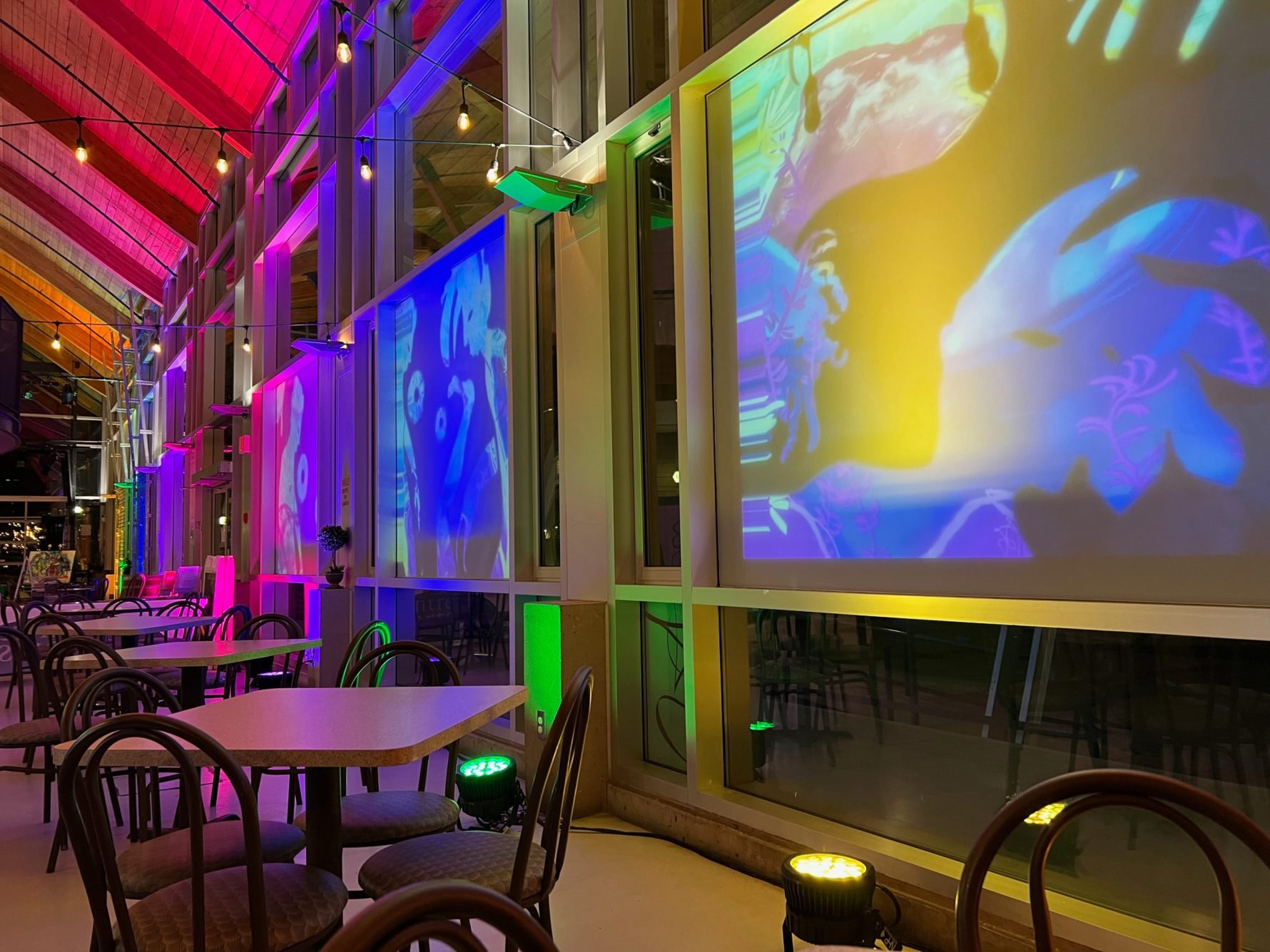A beacon of light during dark, cold nights, ARTSCO’s Digital Urban Screen is a must-see art experience in the Kelowna Cultural District. 2021 Pride is an exploration of being comfortable in your own skin. Jacen Dennis and Kaytlyn Barkved’s work skillfully opens a conversation about individuality, acceptance, and being part of the community. I am truly inspired by the images of vulnerability juxtaposed with fierce pride demonstrated in this show. Through the power of art, we can find new ways to share the human experience. I invite you to swap the ‘small screen’ for the Digital Urban Screen, put on your warm jackets, and take an evening stroll by the Rotary Centre for the Arts from November 1 – 28!”
— Kirsteen McCulloch, Executive Director
On display every evening from 6:00 p.m. -12:30 a.m. outside the Rotary Centre for the Arts (421 Cawston Ave.), 2021 Pride is a multi-disciplinary visual arts show.
2021 Pride is the first of the Digital Urban Screen winter series to be showcased in downtown Kelowna this year thanks to Light Up Kelowna — a partnership between the Arts Council of the Central Okanagan (ARTSCO) and UBC Okanagan’s Faculty of Creative and Critical Studies.
Read More Here.
Featuring Jacen Dennis and Kaytlyn Barkved, 2021 Pride explores the concept of being comfortable in your own skin. The artists’ work captures inner thoughts manifest in bodily form. Metaphysical and physical imagery invites the viewer to engage in a conversation about identity.
Featured Artists
Jacen Dennis is a transgender new media artist and graduate of both the Bachelor of Fine Arts and Master’s of Fine Arts programs at UBCO. He is currently a sessional instructor in the Department of Creative Studies. This animated artwork explores ideas of belongingness: in nature, in community, in one’s own body, spanning from a time early in his transition to the current day.
Kaytlyn Barkved is a queer disabled artist and a graduate student in the Interdisciplinary Graduate Studies program at UBC Okanagan. Kaytlyn’s work contemplates the intersections of disability, sexuality, and gender identity and features images from her thesis work “Neuroqueer Imaging”





